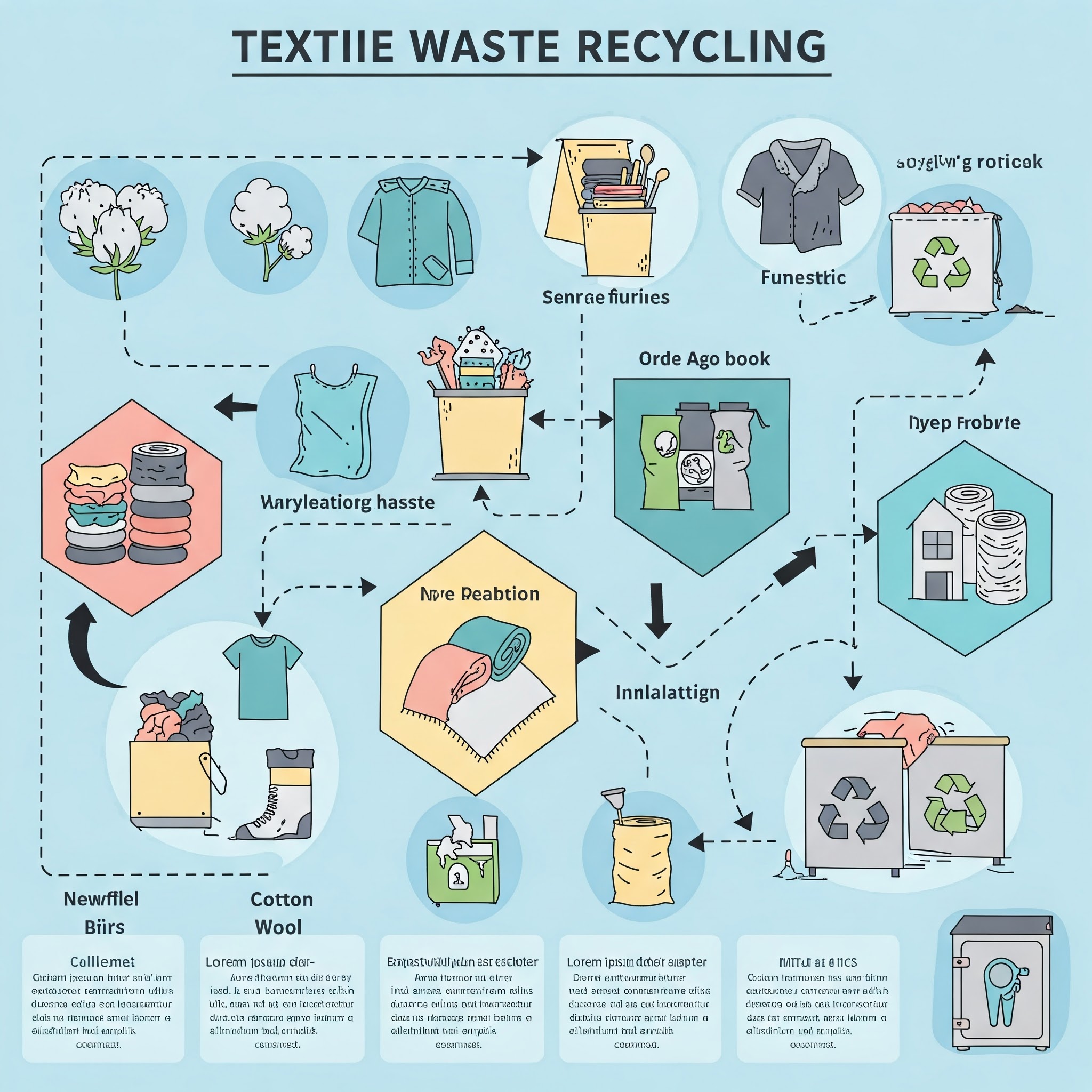Textile waste is a growing global problem, contributing significantly to landfill pollution and environmental degradation. With the rise of fast fashion and increased textile production, recycling fabric waste has never been more important. This guide will provide comprehensive insights into how to recycle textile waste effectively, ensuring sustainability while reducing environmental impact.
Understanding Textile Waste
Textile waste includes discarded clothing, fabric scraps, upholstery, and other fiber-based products. It is classified into two categories:
- Pre-consumer waste: Generated during textile manufacturing, such as fabric scraps and defective materials.
- Post-consumer waste: Discarded clothing and textiles after consumer use.
Why Recycling Textile Waste is Important
Recycling textile waste is crucial for:
- Reducing landfill waste
- Conserving natural resources
- Lowering carbon footprints
- Promoting circular fashion
The Current State of Textile Waste Management
Globally, millions of tons of textile waste end up in landfills each year. Sustainable management strategies, including recycling and upcycling, are essential to address this crisis.
Common Methods of Textile Recycling
Mechanical Recycling
Breaks down fabric into fibers for reuse in new products.
Chemical Recycling
Uses chemical processes to break fibers down into their raw materials for regeneration.
Upcycling
Transforms old textiles into new, higher-value products without breaking them down completely.
How to Prepare Textile Waste for Recycling
- Sort textiles by material type.
- Remove non-recyclable components (zippers, buttons, embellishments).
- Clean textiles before recycling.
Where to Recycle Textile Waste
Local Recycling Centers
Check municipal recycling programs for textile-specific collection services.
Donation Centers
Organizations like Goodwill and The Salvation Army accept used textiles.
Retail Take-Back Programs
Brands like H&M and Patagonia offer recycling programs for used clothing.
DIY Textile Recycling: Creative Ways to Reuse Fabric Waste
- Turn old clothes into cleaning rags.
- Create patchwork quilts or cushions.
- Repurpose fabric into tote bags or accessories.
How Businesses Can Recycle Textile Waste
- Implement sustainable production practices.
- Partner with textile recycling companies.
- Use eco-friendly packaging and fabric materials.
Government Policies on Textile Waste Recycling
Many countries have regulations promoting sustainable textile disposal. Research local policies to stay compliant and contribute to eco-friendly practices.
Textile Waste and Circular Economy
A circular economy focuses on reusing, recycling, and reducing waste. Textile industries must integrate sustainable methods to minimize waste and extend product life cycles.
Common Challenges in Textile Recycling
- Mixed fabric blends complicate recycling.
- Limited recycling facilities.
- Lack of awareness and participation in textile recycling programs.
The Role of Consumers in Textile Recycling
Consumers play a vital role by:
- Choosing sustainable brands
- Donating instead of discarding clothes
- Supporting textile recycling initiatives
Innovations in Textile Recycling Technology
- AI-based sorting systems
- Bio-based chemical recycling processes
- 3D printing with recycled fibers
Textile Waste Recycling Success Stories
- Nike’s Reuse-A-Shoe Program: Turns old shoes into sports surfaces.
- Levi’s Cotton Recycling: Uses recycled cotton for new denim production.
Eco-Friendly Alternatives to Textile Disposal
- Composting natural fibers like cotton and wool
- Reselling or swapping clothes
- Renting fashion items instead of buying
How Schools and Institutions Can Promote Textile Recycling
- Conduct textile recycling drives.
- Educate students on sustainability.
- Collaborate with textile recycling organizations.
The Economic Benefits of Textile Waste Recycling
Recycling textiles creates jobs, saves production costs, and generates revenue through resale and repurposing.
Textile Waste Recycling in Developing Countries
Many developing nations are implementing initiatives to manage textile waste sustainably, often repurposing materials for new uses.
How to Educate Others About Textile Waste Recycling
- Share informative content on social media.
- Organize community workshops.
- Encourage sustainable fashion practices.
FAQs on How to Recycle Textile Waste
What textiles can be recycled?
Most fabrics, including cotton, polyester, and wool, can be recycled. However, blended fabrics can be challenging.
How do I know if my old clothes can be recycled?
Check with local recycling programs or brand take-back schemes.
Can I compost textile waste?
Yes, natural fibers like cotton, wool, and silk can be composted, but synthetic fabrics cannot.
Conclusion
Recycling textile waste is a vital step toward sustainability. By making conscious choices—donating, reusing, and recycling—we can reduce landfill waste and protect the environment. Get involved today by finding a local textile recycling center or starting a DIY upcycling project!
Call to Action: Share this guide to spread awareness and inspire more people to recycle textile waste responsibly!
